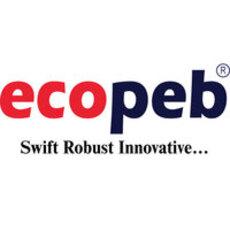Notifications

In the past few years, Pre-Engineered Buildings (PEBs) have started to become widely adopted throughout India, not just in the bigger metropolitan areas, but most recently in the smaller Tier 2 and Tier 3 cities.
This shift represents a new era in the development of India's infrastructure, as smaller cities begin to adopt modern or "contemporary" construction methods that offer efficiency, sustainability, and economy.
Why Tier 2 and Tier 3 Cities?
This transition has occurred because Tier 2 and Tier 3 cities are becoming important drivers of infrastructure and industrial development. Here is why they are adopting Pre-Engineered Buildings (PEBs) at an increasing rate:
1. Affordability for Land Ownership and Operational Expenditure
The prices of real estate have increased dramatically in Tier 1 cities; consequently, businesses are beginning to look for more affordable alternatives. In Tier 2 and Tier 3 cities, land prices are
Less expensive to buy
Less expensive to build new buildings and operate
More availability of labor and recruitment costs less than in Tier 1 cities
This makes the Tier 2 and Tier 3 cities prime locations for building manufacturing plants, warehouses, and New Commercial properties with PEB technology.
2. Faster Urbanization and Industrialization
As Tier 2 and Tier 3 cities mature, there is an increasing demand for:
Industrial Building Infrastructure---factories, cold storage, logistics parks, etc.
Public Infrastructure---schools, hospitals, etc.
Commercial Building Infrastructure---office, resorts, shopping malls, etc.
PEBs allow for rapid or accelerated execution of the buildings and provide modern solutions for the accelerated pace of construction to be delivered to the communities.
3. Government Push and Policy Support
Initiatives such as
Make in India
Smart Cities Mission
AMRUT (Atal Mission for Rejuvenation and Urban Transformation)
4. Improved Connectivity and Logistics
With better highways, rail linkages and logistics networks, Tier 2 and 3 cities are now better linked into supply chains, making them excellent locations for
Warehousing and logistics parks
Industrial clusters
Distribution hubs
Why PEBs are Achieving Momentum
1. Speed and efficiency: PEBs represent a prefabricated building process and can be fabricated offsite and then assembled quickly (often within a day) onsite, reducing the overall construction time by as much as 50%. In smaller cities that are developing rapidly with incremental physical development, this rapid ramp-up timeline for businesses or industries is critical.
2. Cost savings: Even with the lower material waste, labor savings, and decreased project execution period, the supply chain still requires monitoring. The lower material costs and seemingly reduced construction costs of PEBs provide a cheaper option than traditional construction, which is especially disabled in more compact, growing cities.
3. Customization: PEBs can be customized for just about any application, from warehouses and factories to educational institutions and commercial buildings. It is this flexibility that is appealing for entrepreneurs and government projects.
4. Government support and development of new industry: The Indian government's push for decentralization of industry and unique programs such as “Make in India” and the “Smart Cities Mission” are driving significant development in less populated towns and cities. PEBs are vital to quickly establishing industrial parks, logistics centers, and commercial infrastructure in smaller areas.
Applications across Tier 2 and Tier 3 Cities
Logistics parks: Places like Indore, Coimbatore, and Nagpur are all seeing a rise in logistics. Pre-Engineered Buildings are well suited to building large warehouses and distribution centers.
Manufacturing plants: Land and labor are cheap in these areas, and many MSMEs are positively choosing PEB building for their factories.
Education and health facilities: Speedy build times allow schools, colleges and hospitals to be built in developing regions.
Retail and commercial buildings: Malls and showrooms, and even office spaces are using PEB solutions as a result of faster designs and constructions.
Key Factors to Watch
Real estate development activities in old peri-urban locations
Appreciably cheap land prices for industrial investment
Easier accessibility with real roads, rail, and very strong logistics
General knowledge of PEB technology, application, and legacy
Getting Ready for the Future
As tier 2 cities and tier 3 cities urbanize, accumulate growth, and sponsor investments, demand for reliable, fast and scalable growth is only going to increase. Pre-engineered building systems (PEB) technology is exactly what the nation is looking for: modern, engineering-driven incentives to careers to save us all money.
Processes involved in construction and building are changing rapidly. PEB is no longer a trend, but it will be the new vernacular for future development in India.
Source: https://www.businesssoftwarehelp.com/articles/the-rise-of-peb-in-tier-2-and-tier-3-cities-in-india


